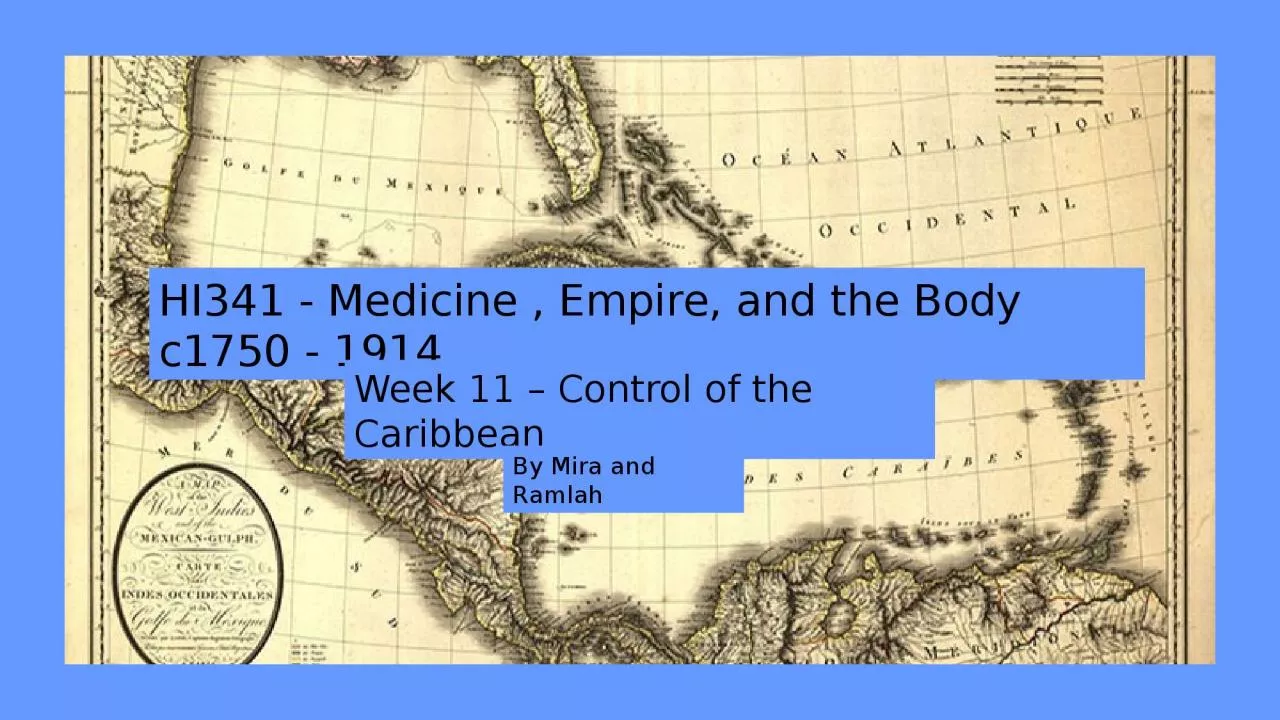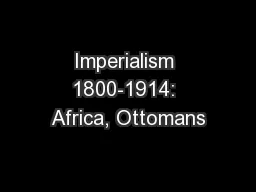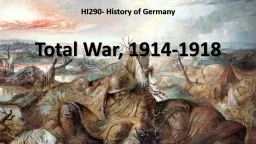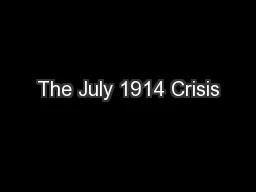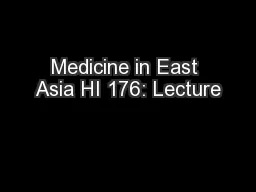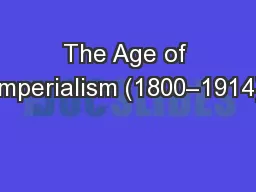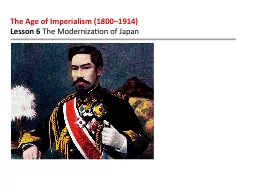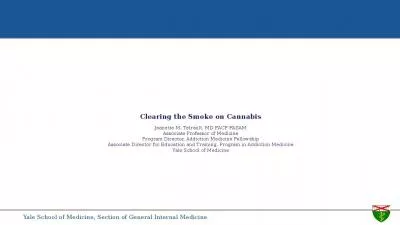PPT-HI341 - Medicine , Empire, and the Body c1750 - 1914
Author : ButterflyKisses | Published Date : 2022-08-04
Week 11 Control of the Caribbean By Mira and Ramlah Medicine and Empire by Pratik Chakrabarti Ch 3 Medicine and the Colonial Armed Forces The period between
Presentation Embed Code
Download Presentation
Download Presentation The PPT/PDF document "HI341 - Medicine , Empire, and the Body ..." is the property of its rightful owner. Permission is granted to download and print the materials on this website for personal, non-commercial use only, and to display it on your personal computer provided you do not modify the materials and that you retain all copyright notices contained in the materials. By downloading content from our website, you accept the terms of this agreement.
HI341 - Medicine , Empire, and the Body c1750 - 1914: Transcript
Week 11 Control of the Caribbean By Mira and Ramlah Medicine and Empire by Pratik Chakrabarti Ch 3 Medicine and the Colonial Armed Forces The period between the 17th century and the 19th century was marked by numerous wars over colonial territories between European nations as well as with indigenous peoples which led to economic stress and high number of casualties with more servicemen dying from disease than battle injuries . WWI . THE GREAT WAR. The Real Face of War.... M – . Militarism. : the policy of the government making the military very strong. . A – . Alliances system. : where countries make agreements that if they are attacked the friendly country will help them.. L/O – To understand the nature of the Great Powers of Europe and suggest reasons why they might be in conflict. What are the causes of war?. Militarism. – when countries . build up . their . armies, navies and weapons. Slave Trade, Rise of New Imperialism and the ‘Scramble for Africa’. Imperialism 1800-1914: Ottomans. c. 1800. Ottoman Empire. Ottoman Empire. 16. th. C.: integral part European trade networks. . HI290- History of Germany. Factors leading up to the war:. Wilhelminian. . Weltpolitik. . with its blunders and sense of entitlement. System of alliances; Entente Cordiale/Triple Entente (Russia, France, . I. Military Planning. The Ideology of the Offensive. Plans: Prepare for future war. Count on speed and overwhelming force. Detailed. I. Military Planning. C. The Schlieffen Plan: 1905. 1. Two Front War for Germany. “Some Damned Foolish Thing in the Balkans”. Why did a world war begin in 1914?. 1. Significance of the First World War. “Thirty Years War” – Europeans wage “war of all against all” (1914-45). HEADLINE. Body. text,. body text, body text, body text, body text, body text, body text, body text, body text, body text, body text, body text, body text, body text, body text, body text, body text, body text, body text, body text, body text. 6. Dr. Howard Chiang. Historical Context. Periodization of East Asian History. China: Ming (1368-1644), Qing (1644-1911), Republican (1911-49), PRC (1949-present). Japan: Edo/Tokugawa (1603-1868), Japanese Empire (1868-1945), Showa (1926-89), . . Lesson 3 . Europe and the Muslim World . Learning Objectives. Explain how internal and external pressures shaped the Muslim world.. Identify the challenges facing the Ottoman empire and Persia.. Describe the ways Egypt tried to modernize, including the opening of the Suez Canal.. First . World War 1914–18. Australian troops in the Turkish Lone Pine . trenches.. Australia's . early involvement in the Great War included the Australian Naval and Military Expeditionary Force landing at . First . World War 1914–18. Australian troops in the Turkish Lone Pine . trenches.. Australia's . early involvement in the Great War included the Australian Naval and Military Expeditionary Force landing at . . Lesson 6 . The Modernization of Japan . Learning Objectives. Identify the problems faced by Tokugawa Japan.. Explain how the United States opened Japan to the outside world.. Analyze the causes and effects of the Meiji Restoration.. Byzantine Empire – Eastern Roman Empire Byzantine Empire (330 CE-1453 CE) The Eastern Empire split from Rome after 330 CE, and continued under Greek rule While the West fell in 485 CE, the East continued and was a dominant force Jeanette M. Tetrault, MD FACP FASAM. Associate Professor of Medicine. Program Director, Addiction Medicine Fellowship. Associate Director for Education and Training, Program in Addiction Medicine. Yale School of Medicine.
Download Document
Here is the link to download the presentation.
"HI341 - Medicine , Empire, and the Body c1750 - 1914"The content belongs to its owner. You may download and print it for personal use, without modification, and keep all copyright notices. By downloading, you agree to these terms.
Related Documents

